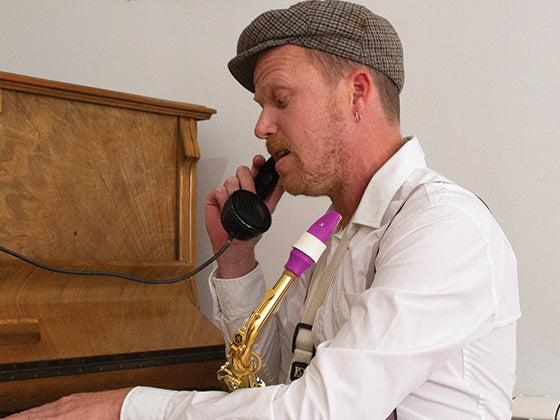This article is the third and final exercise of the series Practice Your Own Sound. If you didn't read the first two exercises on long tones and overtones, stop right now! It's better to read them before beginning this last exercise. Have a read here: Saxophone sound practice #1: Long tones and Saxophone sound practice #2: Overtones
5ths and 8ves: Why?
This exercise helps you to stengthen your embouchure, the air flow and the tuning between registers. It's best to be accompanied by a piano as the resonnance of the saxophone with the piano is quite an experience! With a keyboard, we lose the sonic and contemplative interest, but it is still a good exercise.
5ths and 8ves: How?
To start: On the piano or keyboard, with your foot on the sustain pedal, play the note corresponding to the Bb of your saxophone, so Ab for tenors and sopranos and Db for altos and baris.
Play an octave higher, back and forth, listen, and then play these notes on your saxophone, back and forth, slowly. Don't move your jaw, open your throat, relax your larynx and push the air from the bottom of your lungs. The two notes shouldn't be interrupted by a lack of air. If this is the case, push more, open more. Listen to the resonnance of the piano strings, isn't it beautiful?
Now play between the medium and the high Bb, same idea. And then do the exercise between 2 octaves, high and low Bb. This sounds ugly? This is difficult? Congratulations, you can work on it!
2nd step
Add the fifth to the exercise, the F of your saxophone. Play the notes on the piano, play the saxophone. Low Bb, low F, medium Bb. Then add medium F, high Bb and high F. Watch out your embouchure, don't squeeze, smile and push the air. If you're struggling between 2 notes, slow down, repeat, watch your posture and your embouchure. And smile!
Last but not least
Now you can repeat the exercise from the other low notes B, C, C#, D, D# ... E!) with corresponding 5ths.
Have fun!
- And! Now you've worked on sound, you can work on technique: How to work your scales efficiently













